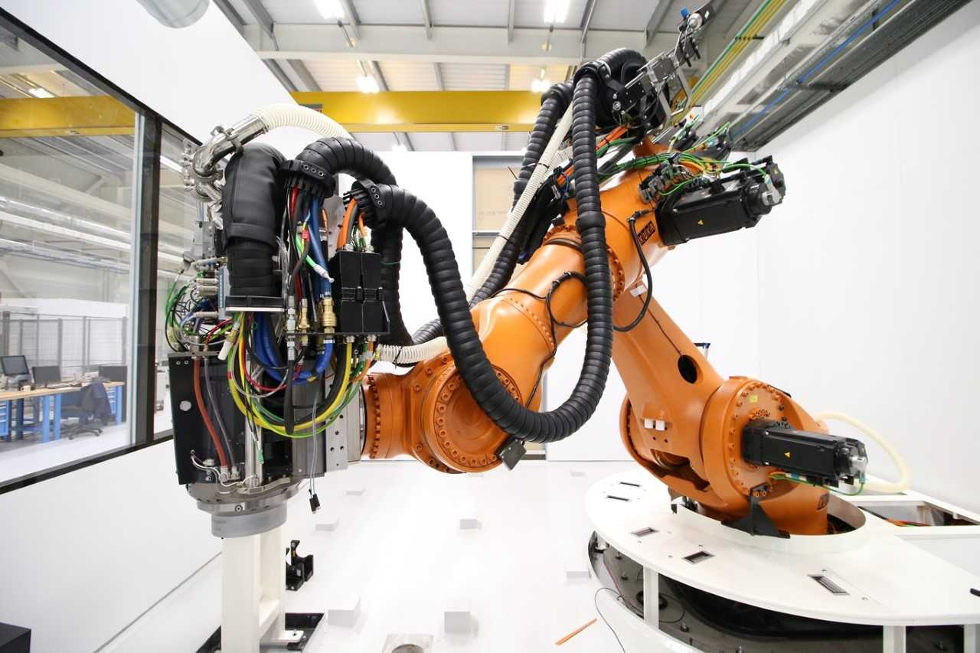
The highly accurate robot milling system could take some of the workload off expensive machine tools, alleviating a bottleneck on the production line, its developers say.
Researchers at the University of Sheffield Advanced Manufacturing Research Centre (AMRC) with Boeing, with support from the Aerospace Technology Initiative (ATI), have modified an off-the-shelf KUKA Titan robot to develop the robotic milling system, in an £850,000 project.
The robot is capable of machining parts with an accuracy of below 100 microns. This is less than the accuracies of around 20-50 microns and below achievable with high-end machine tools, but a significant improvement on existing robots, according to Chris Greaves, operations manager of the AMRC’s Integrated Manufacturing Group at Factory 2050.
“We see a big benefit in having a large flexible tool like a robot being able to do accurate milling,” he said. “Machine centres are often bottlenecks in factories, you might have a £10m machine tool with a large working area, and a lot of its time it is doing roughing cuts,” he said.
Instead, the robot could undertake rough cuts and semi-finishing work, while the machine tool is left to carry out any high surface finishing, he said.
To improve the accuracy of the robot, the researchers replaced the original motor encoders, which tell the machine where it is in space, with new rotary encoders, developed by Renishaw, at each joint.
“An inherent issue with robots is they measure their position based on the position of their motors, not their joints, so you can have quite a large stack-up of errors,” said Greaves.
By fitting the encoders to the joints themselves, the robot is able to measure its position much more accurately.
The technology was developed with aerospace automation company Electroimpact, and could lead to accurate, stiff, but flexible robots capable of machining both metallic and composite structures.
The system could also reduce the need for expensive specialised multi-axis machine tools, and could be used in aircraft manufacturing, as well as the automotive, defence and marine industries, the researchers say.
The robot has now been installed at the AMRC, and the team plan to carry out research over the summer to demonstrate that it can perform as they expect.




Report highlights significant impact of manufacturing on UK economy
Note to Evil Villain/Dave 2020. Thatcher was PM for _11_ years, from 1979 to 1990 so no one under the age of 34 was even born when she left office....